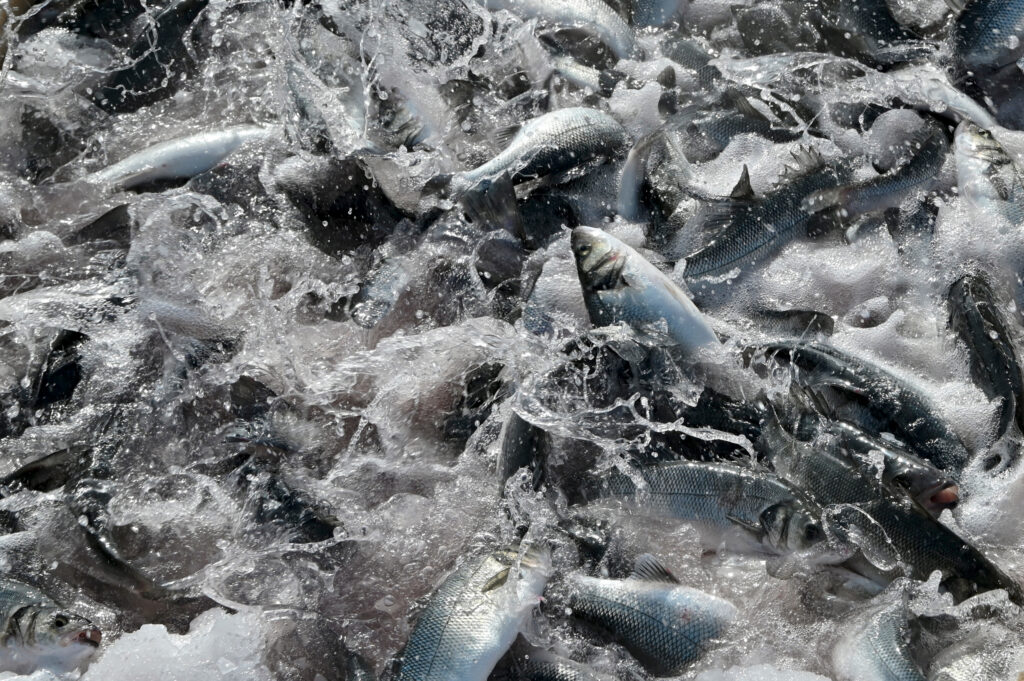Goliad County 6,410-acre coastal prairie habitat sold – SouthTexasNews.com

Report on the T.M. O’Connor Ranch Conservation Easement and its Contribution to Sustainable Development Goals
Project Overview
- Location: A 6,410-acre portion of the T.M. O’Connor Ranch in Goliad County, Texas.
- Objective: To place one of the largest remaining tracts of Texas coastal prairie habitat under a permanent conservation easement.
- Operational Status: The property will remain a privately owned, working cattle ranch, with the easement preventing future development and habitat fragmentation, thereby ensuring its ecological integrity.
Collaborative Framework and Funding (SDG 17: Partnerships for the Goals)
- A multi-stakeholder partnership was established, involving The Nature Conservancy (TNC), the Gulf Coast Ecosystem Restoration Council (RESTORE Council), and the Texas Commission on Environmental Quality (TCEQ).
- The total cost of the easement was $8.863 million, demonstrating a successful public-private partnership model for achieving sustainability objectives.
- Funding sources included:
- A $7.6 million grant administered by TCEQ through the RESTORE Council, utilizing funds from civil penalties related to the Deepwater Horizon oil spill.
- Additional contributions from the Knobloch Family Foundation, Frank Klein, and H-E-B.
- This initiative is the first conservation easement approved by the RESTORE Council and represents the largest land protection effort funded by the RESTORE Act to date, highlighting a significant achievement in collaborative environmental governance.
Direct Contributions to Global Sustainability Targets
- SDG 15: Life on Land: The project’s primary outcome is the conservation of a critical terrestrial ecosystem. By preventing development, the easement directly halts habitat loss and land degradation, protecting biodiversity and the vital services provided by the coastal prairie.
- SDG 13: Climate Action: The intact prairie provides essential ecosystem services that contribute to climate change mitigation and adaptation.
- Climate Mitigation: The prairie landscape acts as a natural carbon sink, contributing to carbon storage and the reduction of atmospheric greenhouse gases.
- Climate Adaptation: The conserved land enhances regional resilience by providing natural buffering against climate-related disasters such as floods and hurricanes.
- SDG 14: Life Below Water: The project supports the health of coastal and marine ecosystems. By acting as a natural filter, the prairie improves the quality of water runoff into the Gulf of Mexico, which is critical for the restoration of the Gulf Coast ecosystem following the Deepwater Horizon oil spill.
- SDG 6: Clean Water and Sanitation: The conservation of the prairie ensures the continuation of natural air and water filtration processes, contributing to the protection of regional water resources.
- SDG 11: Sustainable Cities and Communities: By mitigating flood risks, the project enhances the resilience and safety of coastal communities against natural hazards.
Conclusion
- The T.M. O’Connor Ranch conservation easement is a milestone achievement that aligns directly with the global agenda for sustainable development.
- The project serves as a powerful example of how strategic partnerships (SDG 17) can leverage funding to achieve significant environmental outcomes.
- Its successful implementation delivers tangible benefits across multiple Sustainable Development Goals, including the protection of terrestrial ecosystems (SDG 15), climate action (SDG 13), and the restoration of coastal habitats (SDG 14), ensuring that critical natural assets are preserved for future generations.
Which SDGs are addressed or connected to the issues highlighted in the article?
- SDG 13: Climate Action – The article mentions that the protected prairie provides benefits such as “flood and hurricane buffering” and “carbon storage,” which are crucial for climate change adaptation and mitigation.
- SDG 14: Life Below Water – The project focuses on protecting a “coastal prairie habitat” on the “Gulf Coast.” The funding source, the RESTORE Act, is directly tied to penalties from the Deepwater Horizon oil spill, aiming to restore and protect Gulf Coast ecosystems, which are intrinsically linked to marine health.
- SDG 15: Life on Land – The core of the article is the conservation of a 6,410-acre terrestrial ecosystem (“coastal prairie habitat”). The conservation easement is designed to “prevent development and habitat fragmentation,” directly contributing to the protection of life on land.
- SDG 17: Partnerships for the Goals – The article highlights a multi-stakeholder collaboration involving a non-profit organization (The Nature Conservancy), government bodies (Gulf Coast Ecosystem Restoration Council, Texas Commission on Environmental Quality), and private funding from a foundation, an individual, and a corporation (Knobloch Family Foundation, Frank Klein, and H-E-B).
What specific targets under those SDGs can be identified based on the article’s content?
SDG 13: Climate Action
- Target 13.1: Strengthen resilience and adaptive capacity to climate-related hazards and natural disasters in all countries. The article states that the intact prairie provides “flood and hurricane buffering,” which directly enhances the region’s resilience to climate-related natural disasters.
SDG 14: Life Below Water
- Target 14.2: By 2020, sustainably manage and protect marine and coastal ecosystems to avoid significant adverse impacts, including by strengthening their resilience, and take action for their restoration. The project protects a “coastal prairie habitat,” a critical coastal ecosystem, and is funded by the RESTORE Act, which aims to restore the Gulf Coast after the Deepwater Horizon oil spill.
SDG 15: Life on Land
- Target 15.1: By 2020, ensure the conservation, restoration and sustainable use of terrestrial and inland freshwater ecosystems and their services. The purchase of a “conservation easement” on the 6,410-acre ranch is a direct action to ensure the conservation of a terrestrial ecosystem.
- Target 15.5: Take urgent and significant action to reduce the degradation of natural habitats, halt the loss of biodiversity. The easement’s purpose is to “prevent development and habitat fragmentation,” which is a direct measure to reduce the degradation of this natural habitat.
SDG 17: Partnerships for the Goals
- Target 17.17: Encourage and promote effective public, public-private and civil society partnerships. The project is explicitly described as a partnership between The Nature Conservancy (civil society), the RESTORE Council and TCEQ (public), and private funders like the Knobloch Family Foundation and H-E-B (private sector), showcasing an effective public-private-civil society partnership.
Are there any indicators mentioned or implied in the article that can be used to measure progress towards the identified targets?
- Area of protected habitat: The article explicitly states that a “6,410-acre portion” of the ranch has been placed under a conservation easement. This is a direct quantitative indicator for measuring progress on protecting terrestrial and coastal ecosystems (Targets 15.1, 15.5, 14.2).
- Financial resources mobilized: The article specifies the total cost of the easement (“$8.863 million”) and the amount of the grant (“$7.6 million”) from the RESTORE Council. This serves as an indicator for the financial resources mobilized through partnerships to support sustainable development (Target 17.17).
- Establishment of partnerships: The existence of the collaboration itself, involving The Nature Conservancy, RESTORE Council, TCEQ, and private donors, is an indicator of the formation of multi-stakeholder partnerships for conservation goals (Target 17.17).
SDGs, Targets, and Indicators Table
| SDGs | Targets | Indicators |
|---|---|---|
| SDG 13: Climate Action | 13.1: Strengthen resilience and adaptive capacity to climate-related hazards and natural disasters. | Area of conserved land (6,410 acres) that provides flood and hurricane buffering. |
| SDG 14: Life Below Water | 14.2: Sustainably manage and protect marine and coastal ecosystems. | Area of protected coastal prairie habitat (6,410 acres). |
| SDG 15: Life on Land | 15.1: Ensure the conservation, restoration and sustainable use of terrestrial ecosystems. 15.5: Take urgent action to reduce the degradation of natural habitats. |
Area of land under a conservation easement (6,410 acres) to prevent development and habitat fragmentation. |
| SDG 17: Partnerships for the Goals | 17.17: Encourage and promote effective public, public-private and civil society partnerships. | Total financial resources mobilized ($8.863 million) through a multi-stakeholder partnership (TNC, RESTORE Council, TCEQ, private funders). |
Source: southtexasnews.com

What is Your Reaction?
 Like
0
Like
0
 Dislike
0
Dislike
0
 Love
0
Love
0
 Funny
0
Funny
0
 Angry
0
Angry
0
 Sad
0
Sad
0
 Wow
0
Wow
0














































.jpg.webp?itok=0ZsAnae9#)







:focal(1500,1000)/https://media.globalcitizen.org/a6/9a/a69a4720-d8a1-4715-b596-18738d03c05c/rotary_polio_hero_image.jpg?#)

/countries/sri-lanka/photo-credit---dmc-sri-lanka.tmb-1200v.jpg?sfvrsn=dc298bcc_1#)



















